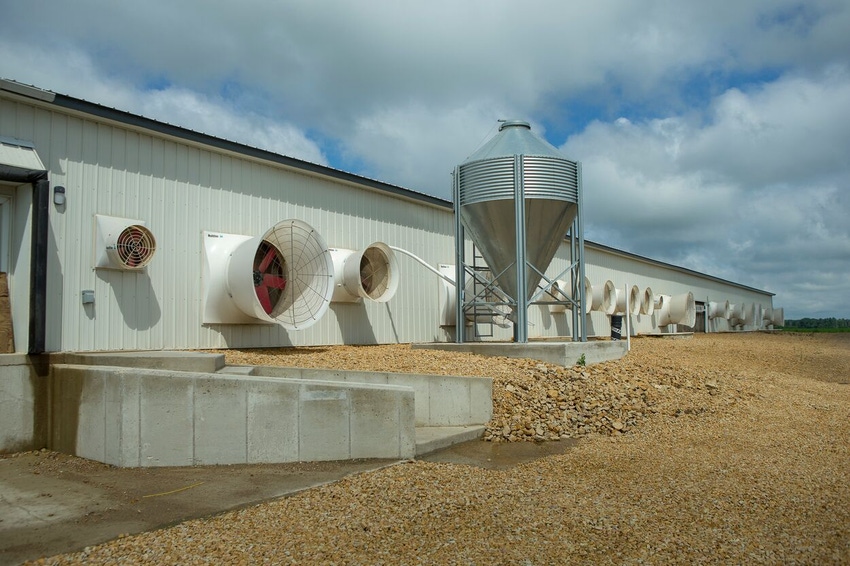SHIC identifies JEV research gaps to fuel U.S. preparedness
Immediate preparation includes investigating the trade implications, economic losses to the U.S. pork industry due to production losses on sow farms.
April 6, 2023

The February 2022 outbreak of Japanese encephalitis virus in Australia spurred action by animal and public health officials around the world. In the United States, the pork industry began monitoring Australia's situation and response, ramping up prevention and preparedness activities immediately. The Swine Health Information Center, along with industry partners, compiled a comprehensive list of research gaps to facilitate next steps in the ongoing efforts towards reducing the risk of JEV introduction and spread, understanding JEV's impact on production, and investigating how on-farm factors influence JEV transmission.
An October 2022 JEV symposium co-sponsored by SHIC helped to inform the research gap identification effort, with needs broken into three areas of focus: immediate preparation response, intermediate response and longer-term response. Review the full list of priorities here.
Immediate preparation/response
Production loss: Investigate trade implications of a JEV incursion into the United States; estimate the potential economic losses to the U.S. pork industry due to production losses on sow farms, disrupted domestic and international markets, and trade restrictions if JEV is introduced.
Epidemiology: Investigate the mechanism of JEV spread through a production site, defining the risks or epidemiological factors, including vector-free transmission, playing a role in the extent of spread and variation of clinical signs within a litter and across litters. Goals include identifying mitigation strategies to minimize JEV impact on farm production.
Diagnostics: Design novel, or confirm current, diagnostic assays for JEV (PCR, antibody) at US. veterinary diagnostic laboratories can distinguish between other flaviviruses in the United States (West Nile virus, St Louis encephalitis virus) and will detect all five genotypes (I-V) of JEV.
Eradication: Model spatiotemporal spread of JEV post-incursion to identify mitigation strategies for biocontainment and rapid eradication from the United States.
Communication: Determine the most effective consumer and producer messaging on JEV being a "mosquito disease," with the goal of minimizing negative effects on pork production and consumption while maximizing safety and protection of swine personnel in the event of JEV incursion.
Intermediate response
Surveillance: Investigate surveillance targets (species, high risk locations in United States, sample types) and diagnostic assays (PCR, antibody) to develop an effective surveillance plan for earliest detection of a JEV incursion into the United States.
Compatible cases: Investigate syndromic surveillance for case compatible VDL submissions in the United States of reproductive disease from sow farms (abortions, mummified fetuses, stillborns, neonatal tremors) to define the annual or seasonal number of compatible cases, including the percent of cases in which no definitive diagnosis is determined.
Challenge model: Develop experimental challenge models for JEV to interrogate interventions and their effect on clinical disease severity, pathogenesis in pregnant sows, transmission rates, virus replication and prevalence within and across litters.
Longer term response
Vaccines: Develop vaccine candidates for use in U.S. commercial swine, to minimize production losses if JEV is introduced, that could be deployed post-outbreak and would allow differentiation of vaccinated from infected animals.
Cross-protection: Determine the extent of JEV cross-protection that is present in U.S. commercial swine after exposure to other flaviviruses (WNV, SLEV) endemic to the United States.
Mosquito control: Investigate effective mosquito control measures for swine farms in the United States, including recommendations based on site design, ventilation type and manure storage.
Vectors: Investigate and characterize the competence of potential vector host species in the United States for JEV, including their geographic proximity to feral and commercial swine populations, and propensity to feed on pigs or ardeid birds.
Wildlife: Define the risk and mitigation of known wildlife hosts, such as feral swine and ardeid birds, in the role of JEV introduction and spread to commercial swine in the United States.
Novel hosts: Investigate and characterize the competence of novel vertebrate host species (non-ardeids and non-swine) in the United States to act as amplifying or dead-end hosts of JEV, including their geographic distribution and proximity to commercial or feral swine.
Sequencing: Investigate the molecular pathogenesis differences between genotype 4 and historical JEV genotypes, including an estimation of virulence factors based on whole genome sequencing.
SHIC is working with industry, university and federal partners to address these research needs and enhance the ability of the U.S. swine industry to prevent, prepare and respond to JEV if introduced. As part of this process, SHIC is in communication with Australian veterinarians, producers and researchers to discuss opportunities for JEV collaboration.
This list of research priorities builds on SHIC's currently funded JEV preparedness efforts, including an updated JEV entry and establishment risk assessment, a comprehensive JEV literature review, and a JEV Information Sharing Network website. This new website will be a JEV information resource designed to answer the pork industry's immediate questions and needs if JEV is introduced into the United States. As research efforts progress, results will be shared by SHIC and posted on the SHIC website as soon as they become available.
You May Also Like



